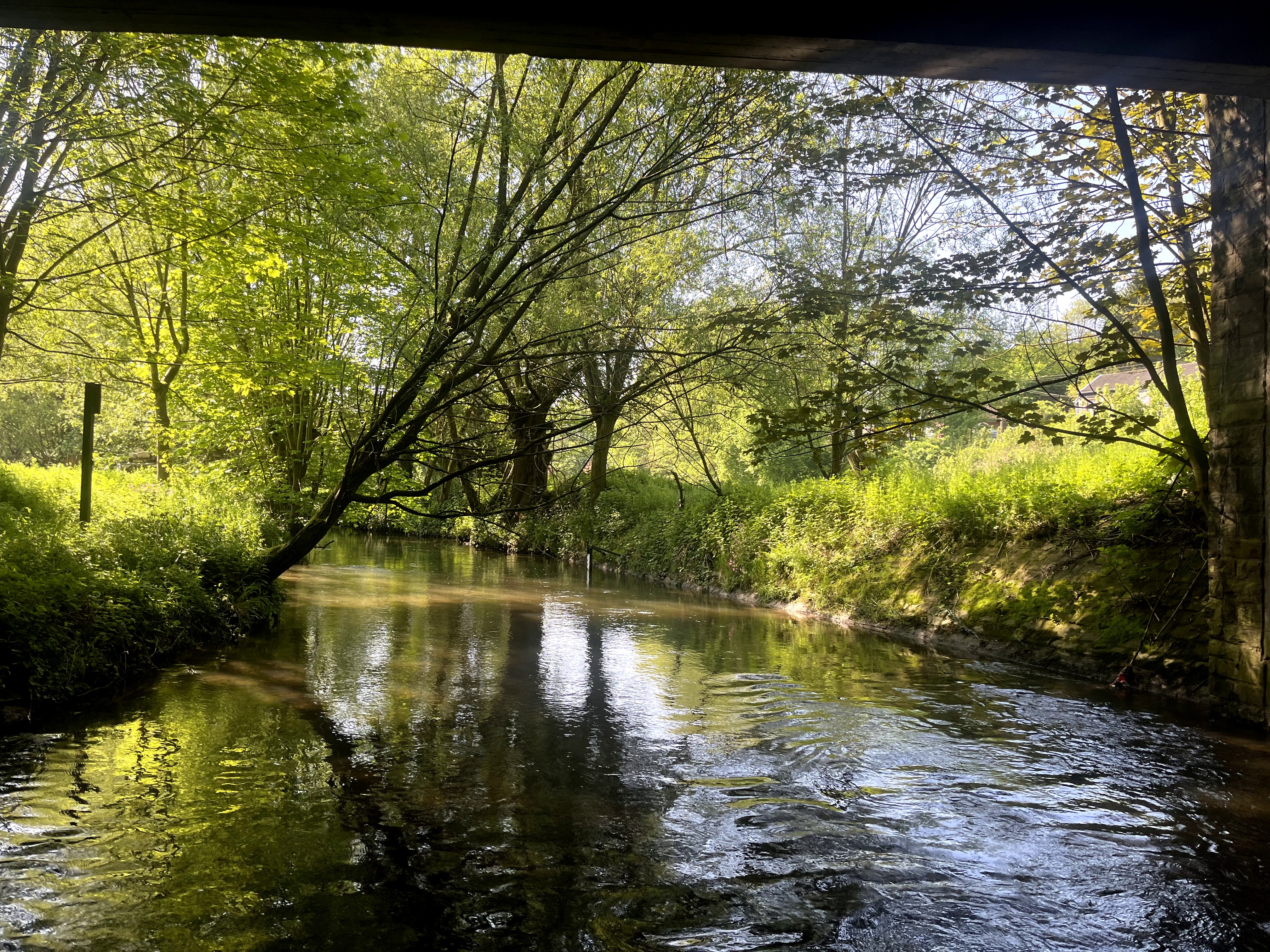Floods in 2023-2024 in the JCAR ATRACE Study Area and Surroundings
Don't look too close, but enlarge your perspective
Over the past seven years, extremes seem to have become the new normal, and average conditions have become the exception. Either the conditions throughout the year were exceptionally dry, as in 2018, 2019, 2020, and 2022, or there were exceptionally wet conditions, as in 2021 and 2023-2024.

Past year floods in the Benelux and beyond
Don't look too close, but enlarge your perspective
In this latter period, (much) more than the usual amount of rain fell over 12 months. All that rain fell over a large part of Germany, the Netherlands, Belgium, and Luxembourg. This rain caused exceptionally wet conditions for a very long time and over a vast area.
Because it was so wet everywhere, the soil was saturated with water, and rain could barely seep into the ground. Only a small amount of additional water was needed to cause high water levels in the rivers immediately. In turn, this led to flooding in many places. The saturated soils also meant that relatively minor rain showers had significant consequences. Because it lasted for a very long time, a year, some regions were hit by flooding more than once. Fortunately, nowhere were the consequences as disastrous as in July 2021.
Critical conditions were mainly found in the regional waters; in the major rivers such as the Rhine, Meuse, and Scheldt, the discharge was high but certainly not exceptional.
In Flanders, all the rain in November and December led to flooding in Westhoek and the Yser basin. The amounts of rain were substantial, about 2.5 times the normal amount in Flanders. In the upstream French part, as much as 500mm fell in one month, roughly half of the annual precipitation. Parts of the area had been converted from grassland into drained farmland, which accelerated runoff. A month later, in January 2024, additional rain further east in the Dender area caused local flooding.

500mm
Rainfall in December 2023 in Flanders
It remained wet until the summer, and in May, various rivers in the border area of Wallonia, Flanders, and the Netherlands flooded. In the municipality of Voeren, the water stood at least one meter high in about a hundred houses. The center of Moelingen, a sub-municipality of Voeren, was hit by a power outage, leaving five hundred households without electricity. The water flowed into the Netherlands via the Geul and Gulp rivers. However, here the water levels remained relatively low and hardly caused any nuisance. Authorities had taken preventive measures, mindful of the floods of July 2021.
Throughout Germany, large amounts of rainfall also fell during December and January on already saturated soil. At Christmas, this led to high water levels in regional rivers, especially in the northwest. Again, the amounts were not extraordinary, but the duration and spatial extent of the rain were. Around 30,000 people and about 2,000 buildings were affected. In Hamburg and Bremen, a combination of already high river levels and a sea storm led to disruptive conditions, such as widespread flooded roads, disruptions to train traffic, and large-scale urban flooding.

30,000
People were affected throughout Germany
Large amounts of water gathered in the Vecht river via the cross-border rivers and flowed into the Netherlands. This resulted in the high discharges and highest water levels ever recorded in the town of Emlichheim and extensive flooding in the Dutch part of the Vecht basin.
From December 20th to January 12th, abundant rainfall and strong northwesterly winds caused persistently high water levels in the Dutch parts of the Rhine, Meuse, and IJssel and Marker Lakes. Two major storms, Pia and Henk, worsened the situation. During Storm Pia on December 21st, all seven Dutch storm surge barriers were closed for the first time in 27 years as water levels exceeded critical thresholds. This made the Port of Rotterdam inaccessible from the sea for several hours. The Rhine at Lobith had a moderately high discharge, but the IJssel branch faced extreme inflows, leading to unexpectedly high water levels. The combined high discharges in the IJssel and Vecht, along with unfavourable drainage conditions, led to record-high water levels in both the IJssel and Marker Lakes.
The high water levels in the southeastern IJssel Lake and the large discharge from the Vecht complicated operations at the Ramspol barrier, requiring multiple closures during Storm Pia. While high lake levels and strong winds threatened some unprotected areas around Marker Lake, only minor flooding occurred, and no major dikes were seriously threatened. In the Meuse, a weir near Maastricht (Bosscherveld) unexpectedly breached, partly because the main weir was partly disabled. Despite some damage to the flood defenses and minor issues like limited undercutting of dike sections, the overall system withstood the pressure without major failures.
In July 2024, so much water fell in the eastern Netherlands that parts of the main road network in that region were impassable for several days.
In summary, the most remarkable aspects of this high water event are:
- There was very prolonged, about 12 months, and widespread heavy rainfall across Germany, the Netherlands, Belgium, and Luxembourg.
- Most critical situations arose from a combination of weather conditions, most of which were individually unremarkable.
- It was caused by both high river water and high sea levels and by combinations of both.
- The period of high water/flooding during the Christmas period affected a large part of the aforementioned countries.
- The nuisance lasted for an extended period (several weeks).
How can we interpret these conditions?
We usually consider critical high water as a separate event. Based on such observations, we may take measures to prevent or limit harmful consequences. The past year showed that this might not be the only way, or the best way, to look at such extremes.
In reality, the conditions from which critical high waters could easily arise lasted almost a year. And this fundamentally unfavourable starting position prevailed over a very large area of many tens of thousands of square kilometers, containing many river basins extending across different countries. Several high water events occurred within this area. Often, not so much because the event rain was so intense, but because it fell on an already saturated area. Nor was it an extreme storm that led to the closure of all Dutch barriers. Storm Pia just blew from the same unfavorable direction for a long time. A combination of high sea levels, moderately high river discharge, and a lot of drainage from the rural area led to the highest water levels ever measured on the large lakes in the Netherlands.
The great flood of July 2021 was also the result of prolonged rainfall on already saturated soils. The rain front remained over almost the same area for about 48 hours due to a so-called meteorological blocking. The rainfall intensity per hour within that front was not extremely high, but the accumulation of rainfall over 1 to 2 days was extreme in many areas. This, combined with the coincidence of a very high saturation level of the soil due to preceding rainfall, lead to the devastating floodings.
These events fit the observed and expected pattern of climate change. Research shows that winter precipitation in this part of the world has increased significantly over recent decades. Extreme individual weather events are occurring more regularly. Calculations with climate models simulating the weather in a warmer world show similar developments. The main source of our rain, the Atlantic Ocean, was extremely warm this year and thus acted as an engine that brought large amounts of water into the atmosphere. These are also typical conditions that will (increasingly) prevail in a warmer world.
These recent events clearly show that the cause is not only extreme rainfall intensity, as it is traditionally considered in design, risk, and climate adaptation calculations (e.g., by adjusting climate scenarios for design storms or historical time series). In addition, we have to consider the changes in the temporal and spatial coincidence of exceptional circumstances that cause flooding. This coincidence is often not yet captured in historical measurement series, and even in state-of-the-art climate scenarios, this increasing coincidence of exceptional circumstances is barely taken into account.
And JCAR ATRACE...?
In short, to gain a better understanding of the events in 2023-2024, it is better not to look too closely; otherwise, you might miss the bigger picture. The consequences also extend across multiple countries. This calls for further research into, for example, adapted stress-testing methods. If we want to address this, it would be wise to do so collectively; together, we know more and can reach sensible measures much more effectively. Indeed, this is the idea behind JCAR ATRACE, and that is why it has already been included in the JCAR ATRACE knowledge agenda.

Jaap Kwadijk
Professor at University of Twente

Bruno Merz
Professor at GFZ Helmholtz Centre Potsdam

Patrick Willems
Professor at KU LEUVEN
